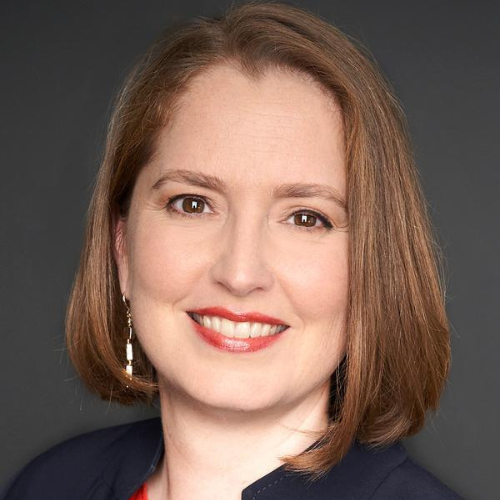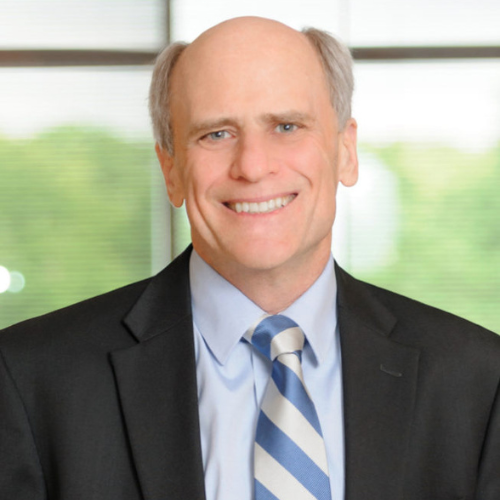Is it 2022 or 1982? Investors' confidence rose last year as the pandemic and lockdowns seemed to be ending. There was positive conviction even with pauses due to outbreaks from new COVID-19 variants. Just as it seemed like there was light at the end of the tunnel, investors began to worry about new threats in 2022’s first quarter—rising inflation, interest rates, and geopolitical risks. The annual inflation rate in the United States increased to 7.9% in February, the highest since January 1982, according to the Bureau of Labor Statistics. Energy remained the most significant contributor as gasoline prices surged by 38%. Prices for housing, food, new and used vehicles also spiked. Another worrisome development was Russia’s invasion of Ukraine, causing loss of life, the destruction of many cities and a refugee crisis. It has also ratcheted up the risk of higher inflation, especially in energy and other commodity-related products.
As in the United States, inflation is at a multi-decade high in Canada. Canada's inflation rate rose to 5.7% in February according to Statistics Canada, as prices for a wide variety of goods such as gasoline and housing climbed. Statistics Canada stated that the inflation rate was the highest since August 1991. Inflation soared over January's 5.1% rate and was above the 5.5% predicted by economists.
Higher Interest Rates
In mid-March, the U.S. Federal Reserve raised interest rates for the first time since 2018 due to the dramatic rise in inflation. The U.S. central bank lifted its benchmark rate by 0.25 percentage points and signaled plans for further rate hikes this year. When announcing the rate hike, Federal Reserve Chairman Jerome Powell stated that "The plan is to restore price stability while also maintaining a strong labor market." He added that the central bank does not want high inflation to become entrenched because "the costs of that would be too high."
The Bank of Canada made a similar move in early March, increasing its target for the overnight
interest rate by 25 basis points to 0.5%, the first hike since October 2018. Bank officials emphasized that they would continue to use monetary policy tools to tame inflation. Their goal is to lower it to the bank’s 2% target and keep inflation expectations well-anchored.
As interest rates rise, bond prices, which move in the opposite direction, have fallen. For example, the U.S. 2-year Treasury yield is now 2.33%, up from 0.786% on January 3. Meanwhile the 10-year Treasury yield is now 2.41% (March 30) vs. 1.637% on January 3.

The danger with higher interest rates for ordinary citizens and businesses is that borrowing costs could rise, which, in turn, could slow economic growth. In addition, higher bond yields cause future profits to be less valuable, forcing stock valuations to decline.
Improving your Portfolio for Rising Inflation and Interest Rates
With the macroeconomy changing so quickly, the average investor is quite concerned if their portfolio can cope with the new environment. Investors may be searching for trusted advice on to properly adjust their portfolio as inflation and interest rates rise. One financial advisor, Brandon Currie, CLU, CFP, CHS, RRC, offers the following advice to investors. His firm is licensed in British Columbia, Ontario, Nova Scotia, Newfoundland, and Labrador. First, he cautions that there is no "one size fits all" investing approach. He explains that each investor is different with unique goals, dreams, and time horizons. “Then, when you couple that with all the different risk profiles depending on those objectives, you cannot approach every client with the same solution," Currie says.
Currie’s advice follows these points:
Step One. Begin with finding a financial advisor or planner professional. One thing to remember is that their designations matter. If someone is willing to invest in their education—enabling them to increase their knowledge and skills constantly—they will take the time to invest in your future and your money.
Step Two. Ignore all the industry acronyms/jargon; they merely confuse you. Take the time to research what the terms mean so that you are armed with the knowledge to conduct a conversation with your professional advisor. For example, he emphasizes that learning terms such as the difference between monetary and fiscal policy, macro and microeconomics, a stock’s market cap, stock split, etc., can be overwhelming. If you do not know, then don’t be shy to ask.
Step Three. Since there is no "one size fits all" strategy, it's crucial to have a robust conversation with your professional. Currie emphasizes that you need to think about how you would react if the market corrected by 20%; what would you do? Your answer to that question will help guide your professional in advising you on solutions that meet your needs and risk profile.
Advisor Nicolle Lalonde of Edward Jones in Fonthill, Ontario, shared similar advice: “We work to understand each client's situation, their individual goals, and then provide a roadmap to achieve those goals. Lalonde explains that her firm has always taken inflation into account when planning those future goals. Her best advice is to start by defining your own goals and then ensure that you review and revise those goals annually. “Setting appropriate expectations and understanding the risks that can affect your goals is very important,” she said.
As for the different vehicles in Canada for investing for retirement/small goals, there is the Tax-free savings account (TFSA), Currie explains. All TFSA contributions are made with after-tax dollars and all growth is 100% tax-free. The annual limit is set by the Canada Revenue Agency (CRA) and the current Government through budgets. In addition, Canada also has the Registered Retirement Savings Plan (RRSP). The account’s contribution limit is more complicated to compute, so Currie encourages readers to click the hyperlink to read more.
The account enables investors to contribute with pre-tax dollars or after-tax dollars. If you contribute after-tax dollars, you obtain a tax deduction. There are many variances with the RRSP whether it is personal or group. However, these are the two main vehicles available to everyone over the age of 18, Currie says.
What you put into these vehicles needs to be a mix. To conclude, Currie emphasizes that having a mix of GICs (Guaranteed Investment Certificates) stock/bonds, and mutual funds helps investors “ensure that they are well diversified, but also you are within your risk profile to meet your longer-term objectives.”

U.S.-based investors have the option of purchasing Treasury Inflation-Protected Securities (TIPS) to help their portfolio keep pace with inflation. These are bonds, whose principal and interest rate payments climb along with inflation, are available in 5-year, 10-year, and 30-year maturities. The inflation protection offered by TIPS adds to their price. TIPS are more expensive than conventional treasury bonds to purchase, but they offer diversification during higher inflation. There is a similar bond called the Treasury Series I Savings Bonds. These bonds currently pay 7.12% because the rates climb as inflation rises. The rate is adjusted twice a year—in May and November. The government limits total purchase of these to $10,000 per year. They can be purchased at Treasury Direct.
For investors who are either concerned about the increased risk of inflation or whose financial plans would be more damaged by higher-than-expected inflation, there is an alternative to traditional safe bonds (like Treasury securities, certificates of deposit (CDs) and high-quality municipals) that is worth considering, says Larry Swedroe, Chief Research Officer for Buckingham Strategic Wealth, and Buckingham Strategic Partners.
Swedroe emphasizes that there are no free lunches in investing. However, “for investors who do not need liquidity for at least some of their portfolio (which is likely true for almost all investors), a way to reduce the risk of inflation while also increasing expected returns significantly is to shift some of their allocation to the safest bonds to interval funds of private debt, such as Cliffwater’s Corporate Lending Fund (CCLFX). The fund is an interval fund and invests in the senior secured floating rate private debt of middle-market companies, the vast majority of which are backed by private equity firms. As an interval fund, CCLFX must provide a minimum of 5% liquidity per quarter but typically not more than 25%. Repurchase offers may be suspended or postponed per regulatory requirements. Depending on the demand for redemptions, it is theoretically possible that an investor could redeem all their assets, Swedroe explains.
For additional detail about interval funds, they are non-diversified, closed-end management investment companies and involve substantial risk, including lack of liquidity and restrictions on withdrawals. Individuals should carefully consider the fund's risks and investment objectives, as an investment in the fund may not be appropriate for all investors and is not designed to be a complete investment program. An investment in the fund involves varying degrees of risk, and an investor should refer to the applicable prospectus for complete information on risk factors and risk of loss. Shares are an illiquid investment, and investors will not have access to the money invested for an indefinite period of time, Swedroe says.
Conclusion
Interest rates remained low for several years; two years ago, the Federal Reserve lowered rates to near zero and provided additional stimulus to help the country recover from the pandemic. As the U.S. economy continues to recover in 2022, interest rates are climbing. The Federal Reserve raised rates by a quarter-point and has indicated it will hike rates six more times this year. As interest rates and inflation continue to rise, investors should look to diversify part of their portfolios into assets that will climb along with inflation such as TIPs. Choosing assets that are appropriate to your risk level, time horizon, and investment goals can be complex.
Expert Contributions By:

Brandon Currie, Advisor, C.R. Smith Financial Services Inc
Brandon is a trusted advisor and inspiring community leader. Always seeking opportunities to strengthen his craft, he currently holds his CLU®, CFP®, CHS™ and RRC® designations.

Nicolle A Lalonde, Advisor, Edward Jones
Nicolle prides herself on helping her clients feel in control of their financial matters and to clarify their life goals by asking questions they may not have considered before.

Larry Swedroe, Chief Research Officer, Buckingham Strategic Wealth
A published author and sought-after national speaker, Larry has spent his time, talent and energy educating investors on the benefits of evidence-based investing with enthusiasm few can match.





